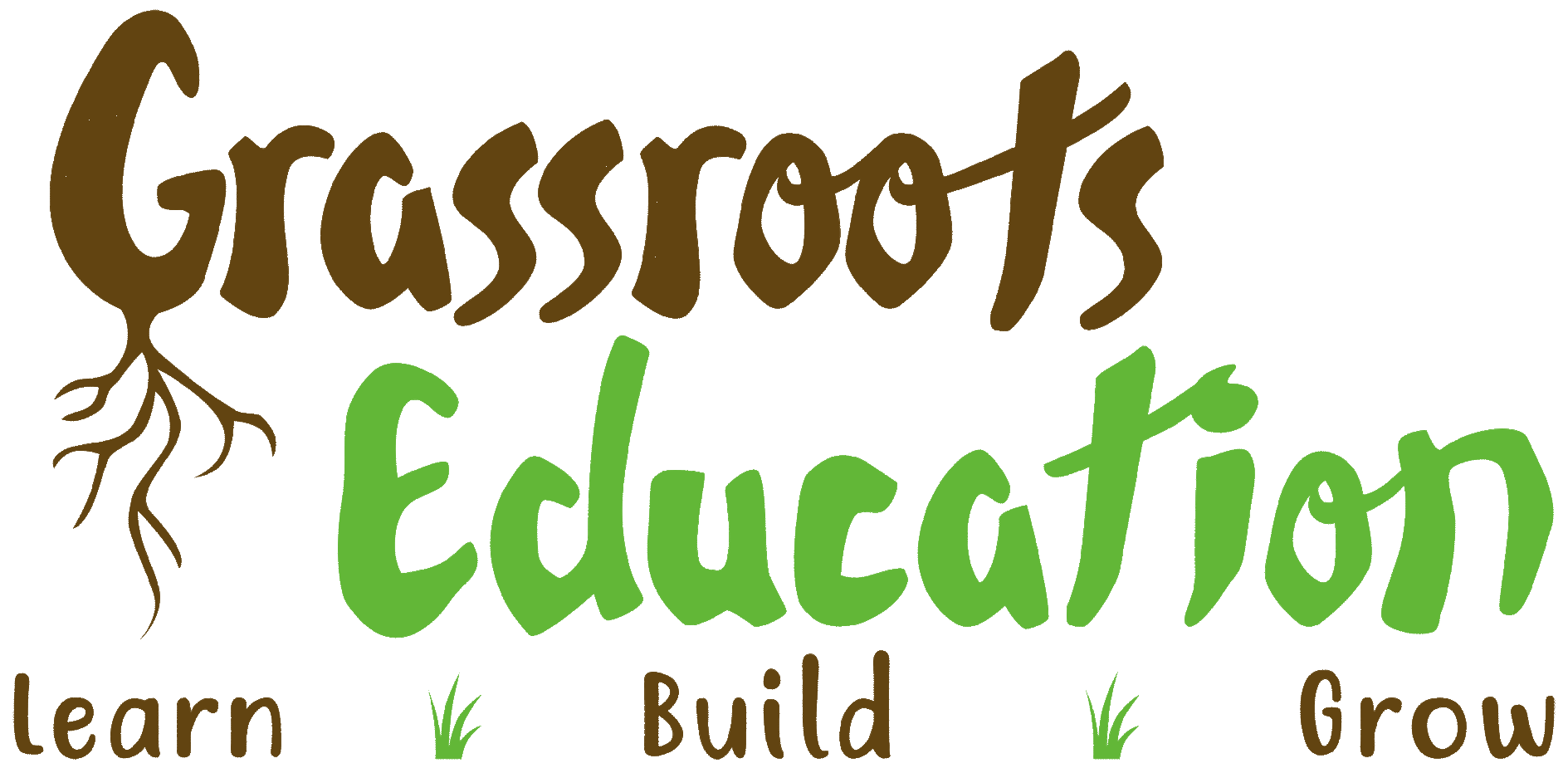
by Marcia Davis-Dawkins | Nov 26, 2019 | Education, Kids, Parents, Teachers
Love is Patient and Kind

By Dr. Marcia Davis-Dawkins
Many of us have heard the words from the Bible, “Love is patient and kind,” 1 Corinthians 13. I have often wondered if we understand what it really means to be “patient and kind” by showing and expressing love. What does it mean? It seems as if, in a world that is so filled with hate and despair, not to mention impatience, that it may be difficult to say that we truly know the meaning of love. It doesn’t seem as if we need to look too far to see all the hatred and disdain that so many people harbor. The cycle keeps going on and on. The news headlines  seem to be filled with lack of love. Where has love and patience gone? In the classrooms and schools in general, the students seem to be filled with sadness through bullying, teasing, and name calling among other unkindness. It sometimes seems unreal, and even frightening, to watch students start out playing and end up fighting and saying unkind words about each other simply because they are so impatient and mean. Where, oh where, did the love go?
seem to be filled with lack of love. Where has love and patience gone? In the classrooms and schools in general, the students seem to be filled with sadness through bullying, teasing, and name calling among other unkindness. It sometimes seems unreal, and even frightening, to watch students start out playing and end up fighting and saying unkind words about each other simply because they are so impatient and mean. Where, oh where, did the love go?
On television, it seems as if the highlight is that teachers and students are fighting and the blatant disrespect is evident. Unkind words are exchanged in the heat of the moment and hurt people continue to hurt people. Everyone is quick to play the blame game instead of putting the shoe on his/her foot. Frustration gets in the way and the love is replaced with heated words and sadness that often lead to loss of lives and friendships. True love shows and tells us how to treat our fellow  classmates, co-workers, peers, spouses and human kind in general. In 2 Corinthians, it explains that true love is not angered easily, is quick to forgive and is always willing to celebrate life with friends, loved ones and just about everyone with whom we interact. Yes, this sounds easier said than done, however, it sets the standards by which we should live. I suppose most people might argue (with kind words) that since prayer and the Bible were taken out of the schools that love left as well. I dare say that 1 Corinthians 13 is the premise on which humankind and love were built. It sets the standards for how we should live by loving each other regardless of color of skin, class, economic status or educational accomplishments. It really makes me feel disheartened when I think of weddings, and then soon after divorces or Valentine’s Day when people simply use the word ” love” so loosely and then days after use the unkind words to tear down their partners. Oh, where is the love?
classmates, co-workers, peers, spouses and human kind in general. In 2 Corinthians, it explains that true love is not angered easily, is quick to forgive and is always willing to celebrate life with friends, loved ones and just about everyone with whom we interact. Yes, this sounds easier said than done, however, it sets the standards by which we should live. I suppose most people might argue (with kind words) that since prayer and the Bible were taken out of the schools that love left as well. I dare say that 1 Corinthians 13 is the premise on which humankind and love were built. It sets the standards for how we should live by loving each other regardless of color of skin, class, economic status or educational accomplishments. It really makes me feel disheartened when I think of weddings, and then soon after divorces or Valentine’s Day when people simply use the word ” love” so loosely and then days after use the unkind words to tear down their partners. Oh, where is the love?
So, it seems as if the lack of love and unkindness are taking center stage these days. It’s almost as if those who show love or kindness are scoffed at, but I believe we cannot give up hope or throw up our arms in frustration; let the peace begin with us. Let kindness and love reign, even in the classroom. It doesn’t hurt to show love to every student with whom we come in contact. It might be the missing link in his or her life. Who knows? This love might be reciprocated and the classroom becomes a garden of love and kindness! It is true that kindness is one of the best ways to show love. Kindness and love can never be wasted; so don’t be stingy with them.
Love for Everyone

by Marcia Davis-Dawkins | Oct 21, 2019 | Education, Kids, Parents, Teachers, Teens
Life is Not About Getting What You Want!

By Dr. Marcia Davis-Dawkins
We often strive for the best and nothing is wrong with that. In fact, I say keep reaching for the stars, since only the best is good enough! However, there is always the “What Ifs?” What if the best I am reaching for is not enough? What if it’s not time yet? Time to get that big promotion, dream job, or even dream house? The question that always haunts us seems to be, “Should I give up trying or find new ways to make it work?” I have come to realize that I should not give up on whatever dreams I have, rather, I should keep striving. The consolation is that life is not about getting what we want immediately, but about working with what we have at the moment until things work out. Will things be ever perfect? Of course not! Perfection for my neighbor might be the ability to find the next meal, while perfection for another might be having a roof over their head and avoiding a life on the streets.
I have come to realize that I should not give up on whatever dreams I have, rather, I should keep striving. The consolation is that life is not about getting what we want immediately, but about working with what we have at the moment until things work out. Will things be ever perfect? Of course not! Perfection for my neighbor might be the ability to find the next meal, while perfection for another might be having a roof over their head and avoiding a life on the streets.
 Seeking perfection may even manifest in the classroom or in studies. One teacher might wish to have the perfect class in terms of behavior, while another teacher might see perfection as being able to communicate effectively with one student. This particular teacher is looking at winning one student at a time instead of the whole group at once. No matter what your goal may be, it is important to remember one solid philosophy that has always worked for me. The good Father won’t give us more than we can bear. He usually takes care of us and give us the “tools” to deal with whatever may come. He will give us strategies to deal with those seemingly unpleasant situations we face.
Seeking perfection may even manifest in the classroom or in studies. One teacher might wish to have the perfect class in terms of behavior, while another teacher might see perfection as being able to communicate effectively with one student. This particular teacher is looking at winning one student at a time instead of the whole group at once. No matter what your goal may be, it is important to remember one solid philosophy that has always worked for me. The good Father won’t give us more than we can bear. He usually takes care of us and give us the “tools” to deal with whatever may come. He will give us strategies to deal with those seemingly unpleasant situations we face.
Life is about working with what we have at the moment. Then again, do we confuse my wants with my needs? There may be times when getting what we want is highly impossible because of our economical situation. I find that sometimes when I want to treat myself, I remind myself that I’ve worked hard for this and I deserve a gift from self. In the classroom, this kind of gift could come in the form of a simple break for students who have worked hard and have gone above and beyond to get work done correctly. The teacher might then give a well deserve and unexpected gift. This gift is seen as encouragement for the students to always work hard on a project/assignment. This might also challenge the student to work harder on another project so there could be more treats. Nothing is more rewarding to me than an educator that has seen a light switched on a student’s face when he or she has gotten a concept. I then know how well it’s worth my time and patience to reteach and retell. Brian Tracey reminded me in his quote, “I’ve found that luck is quite predictable. If you want more luck, take more chances. Be more active. Show up more often.” What say you, do you always get what you want or do you leave everything to luck? Don’t even try to answer immediately simply,
| “Become the impossible, do the unreal, be yourself
and be it all the way.”
– Hindi Krinsky |
Determination and Perseverance

by Marcia Davis-Dawkins | Oct 6, 2019 | Education
Encouraging Movement in the Classroom
By Dr. Marcia A. Davis-Dawkins
When most elementary students are asked what their favorite subject is, the answer that seems most popular is gym/P.E. After hearing this so many times and reading several research-based articles, I am convinced that there is a positive correlation between learning and movement. A few years ago while taking a class, related to differentiated teaching/learning, two things stood out to me during that course of study. One was using “brain breaks” in lessons. The other was that since students love to move (through gym/P.E.), it is necessary to design lessons so that students are excited to learn and look forward to being a student who enjoys learning.
It is always refreshing to hear a student say, “Oh, now I get it,” with a twinkle in the eye. It is also very exciting to teach students, and even to encourage my peers, about incorporating movement in the classroom culture and in turn sending the positive message about learning as well as the students’ desire to learn. Having taught in both high school and elementary school, I have learned quite a lot about making classes exciting for students. After all, research has shown that movement increases the blood flow and helps to improve the physical health and well- being of students.
As the new school year gets underway it is always my quest, and most teachers’ also, to find new and interesting ways to get students to be motivated and make the classes exciting. With this knowledge, I can help my colleagues understand why it is necessary to incorporate “brain breaks” and movements in the classroom.
With the demands of the 21st century and promoting learning it is important to also consider the attention span of the students in our classroom and try to break up the learning using movement.
Differentiate since every person learns differently. There should never be a one-size-fits-all approach to instruction. This is another key strategy that should be taken into consideration by an instructional designer. Differentiation begins when a teacher takes a look at the diversity of the learners in the classroom, and accepts responsibility for the success of each of them. As an instructional designer, differentiation simply suggests that teachers have clear learning goals that are rich in meaning and provide various avenues and support systems to maximize that chance of each student succeeding with those rich and important goals. The key is to look at each student, his or her diversity and try something new! What a better way to redesign the lessons than simply finding ways to incorporate movements in the classroom.
Why Vary Instructional Design?
Kids don’t start at the same place,
they don’t learn in the same way
and they don’t learn at the same pace.
~Linda Darling-Hammond, Stanford University
Like most adults, I learned reading, writing and arithmetic by sitting in an assigned desk completing dittos. We followed a regimen—exactly this many minutes for group reading, this many for responses, and so on. Once I became an educator, this seemed the logical way to teach. Students would sit, do seatwork, and MAYBE, every now and again, when I told them, but only when I told them, students would move. Work would get done, and order and control would reign. This is not so and cannot be utilized in the 21st century!
It was Albert Einstein who said, “Creativity is intelligence having fun”, so let us as educators, be creative for our students as we vary our lessons through movements. We should help our student access the curriculum (which can seem like a race course) and maximize their potential and possibilities. This is truly what meeting the students’ individual needs is all about!
Movement is important so a positive learning community can be created. Movements through brain breaks, which are sometimes referred to as energizers, breaks the monotony of learning. Simply put, they give the brain a break or even trick the brain into thinking it is not learning just because there is fun in the learning. There are many teachers who have built movements in the curriculum to help students learn. After all learning can be fun and according to the authors Tanner & Tanner (2007), curriculum “requires that education must be a dynamic process of individual and social growth. Curriculum is the means and end through which education is made instrumental.” I have been privileged to watch students participate in brain break activities and see how excited they get as they “take a break” – they look forward to each activity. The activities become a part of the classroom culture and the energy from the students is amazing. Some of the activities that we have included are taking nature walks and have students use all their senses and take notes of what they hear, smell, seen, touch and sometimes taste. This encourages movement instead at sitting at their desks. There are also several websites that provide examples of brain breaks – websites such as www.brainbreaks.com, www.GoNoodle.com, http://teachtrainlove.com/20-brain-break-clips-dance-like-no-ones-watching/
 What an exciting way to keep students engaged and energized through brain breaks.
What an exciting way to keep students engaged and energized through brain breaks.
Works Cited
Tanner, D. & L. (2007), Curriculum Development: Theory into Practice, 4th Edition. Pearson Learning Solutions, Upper Saddle, NJ Retrieved from http://digitalbookshelf.argosy.edu/books/9781412989237/id/c01
Differentiated Instruction

by Marcia Davis-Dawkins | Sep 23, 2019 | Education, Kids, Parents, Teachers
Labels

By Dr. Marcia Davis-Dawkins
In marketing, labeling is used to identify products through branding. This labeling gives customers information about the product. Labeling also tags the products, and customers can differentiate one product from another. Labels have to meet various criteria so that customers can spot brands immediately based upon  symbols or even colors. Likewise, the same process is often utilized with people. Labels can show that we are associated with or we belong to a group or a family – that is why we wear certain brands so that we can identify with – we want to identify with certain labels. For instance, we might want to wear the Nike sneakers or clothes because we want to identify with Michael Jordan, a former popular basketball player.
symbols or even colors. Likewise, the same process is often utilized with people. Labels can show that we are associated with or we belong to a group or a family – that is why we wear certain brands so that we can identify with – we want to identify with certain labels. For instance, we might want to wear the Nike sneakers or clothes because we want to identify with Michael Jordan, a former popular basketball player.
People have different labels for others, for instance, Caucasians sometimes have labels for African Americans, African Americans have labels for African Americans, students have labels for each other, teachers have labels for students, parents have labels for their children and even the school system has labels for students. Interestingly enough, some of these labels can be negative as well as positive. Many times teachers and/or parents label their students/children because of behaviors/or attitudes they have witnessed before. We wear a symbol (similar to a gang), which tells that we are in that group. It seems as if the more we label our students, the more they “wear” the labels and cannot shed them because they believe the labels are theirs for life. Educators sometimes place labels on students that send figurative death sentences for students. These messages send them in holes where they are stuck in a time line and they tell themselves that they will never be good at anything. This in effect allows the students to have low self esteem and they don’t explore their capabilities.
Sometimes when I meet people, one of the first things they say after hearing that I am from Jamaica is a bunch of curse words, as if to say that all Jamaicans curse or it’s a way of greeting. Frankly speaking, I find that offensive. Or a second thing they might even ask if I smoke marijuana and that it is difficult to believe that I have not smoked marijuana! Some of these stereotypical labels definitely send a negative connotation. We use what we hear about others to label others or even use outwards appearance to prejudge.
 As such, educators should focus on and make concerted efforts to adequately and successfully address students’ needs and avoid labels. We place labels on students we don’t even know – we simply make assumptions based on other teachers’ experiences. Instead of labeling or belittling our students or others, we could instead be a mentor to those persons and avoid being judgmental. At times because students or people in general are labeled then they wear the labels that could require wearing masks as an extra “costume.” They wear the masks to cover up inhibitions/shortcomings. People sometimes don’t understand the roles we play so things get complicated and we are misunderstood. We feel as if we are inferior or superior in their world based on the label people place on them. Some people might feel less attractive, less important, less smart or self-confidence might be damaged. So many people grow up believing the negative things people say about them and have not tried to prove them wrong. Most times it cripples them – don’t place people in boxes. Some people in some boxes might be lonely and/or depressed. Let’s try to have a positive mindset as we begin the new school year and beyond. “The time is always right to do what is right.” – Dr. Martin Luther King Jr. There should be no excuses; let us avoid labeling.
As such, educators should focus on and make concerted efforts to adequately and successfully address students’ needs and avoid labels. We place labels on students we don’t even know – we simply make assumptions based on other teachers’ experiences. Instead of labeling or belittling our students or others, we could instead be a mentor to those persons and avoid being judgmental. At times because students or people in general are labeled then they wear the labels that could require wearing masks as an extra “costume.” They wear the masks to cover up inhibitions/shortcomings. People sometimes don’t understand the roles we play so things get complicated and we are misunderstood. We feel as if we are inferior or superior in their world based on the label people place on them. Some people might feel less attractive, less important, less smart or self-confidence might be damaged. So many people grow up believing the negative things people say about them and have not tried to prove them wrong. Most times it cripples them – don’t place people in boxes. Some people in some boxes might be lonely and/or depressed. Let’s try to have a positive mindset as we begin the new school year and beyond. “The time is always right to do what is right.” – Dr. Martin Luther King Jr. There should be no excuses; let us avoid labeling.
Accept You For Who You Are

by Marcia Davis-Dawkins | Sep 9, 2019 | Education, Kids, Parents, Teachers
Teaching – Win or Lose?

By Dr. Marcia A. Davis-Dawkins
Many, many, many years ago I decided to enter the classroom as a teacher, but with much trepidation. Teaching for me was not first on my radar since most of the people in my family were teachers and it just didn’t seem like the career choice because, as most people may know, there is little financial gain in this profession. Needless to say, I did everything (or so it seems) I could to steer from being a teacher. Suffice it to say, when the opportunity presented itself for me to go to college under the stern advisement of my aunt, with whom I lived and was a teacher, I took it, but with a fight. The carefully worded newspaper ad enticed me (rather my aunt who then yelled and made it seem as if it would be a missed opportunity, if not taken) to apply for a spot in the world of teaching. The ad also emphasized that I would have a double career – one in business as well as a teacher of business studies! I was caught, but again, teaching was not my choice. I wanted to be in the business world – an administrative assistant or the first step in being an accountant. As fate would have it, weeks before graduation, I was hired on the spot by the head of the business department of my high school, as a business teacher.
I taught until I migrated and it seemed only fit for me to discard, or so I thought, my teaching career path and decided that I would again study business in a new country. Well, no sooner was I done studying, when I wet my feet in the business world and decided that I would return to my other choice – teaching! I decided that even though, it hasn’t made me rich or famous, it has it rewards. It also has it ups and downs. It also seems as if the days when the teachers were seen as the authoritative figures as well as the disciplinarian are over. Many teachers, including myself, get despondent because of the role reversals in the classroom. Many of us spend our time trying to manage students’ behaviors instead of teaching. It is with lots of hassle, and might I say struggle, because so many of our student enter the classroom with lots of psychological problems, it seems. Some parents who believe that we could be the enemy sometimes challenge us. As it were, because of the challenges and the fights that we can we, at times face, we get despondent and wonder why we entered this journey called teaching. But we are reminded of the students whom we reach and who contact us to say what a great job we did with their students and that our job did not go unnoticed.
One of the advantages of teaching is that teachers can usually wipe the slates clean and start over for each school year, but then there are constant reminders of the headaches; will there be any unfortunate stories or items in the news, school fights involving students or even students and teachers, teachers being taunted, teachers being allegedly complained about, teachers being fired because of unexplained behaviors among other things? Where are the lines drawn? Are we too busy worrying if we are next instead of doing what we loved the most or are we being given a chance to do that which we really enjoy: teach? Can we prove that we care about our students and want to see them succeed?

I often wonder if when interns are in the classroom, based on what they see and/or hear they change their minds about teaching and ask themselves why they bothered to go to college to be a teacher? Without asking them, I usually come to the conclusion that like me, they realized that they are good at teaching and want to make a difference one student at a time. I do know for sure that some interns or even teachers buckle under the pressure of teaching and quit. The reasons may vary. They may think that the students are too disrespectful, the financial rewards are not equal to the stress of teaching, teaching isn’t the right fit for them or simply that they realize that they are horrible teachers!
There is a constant war in my head encouraging me to study to show myself approving, to understand my craft more, as well as to be compensated, but how can I climb the ladder without being an administrator? Is that what I really want to do in education? Maybe I don’t want to be the manager of teachers! I simply want to get better at my craft that I enjoy.
For me, I know that since I won’t get the compensation I want, I must continue to meet the amazing parents, students and even fellow educators; naturally that is a big gain for me. Therefore, it has been a great experience for me, and I still look forward to hearing the wonderful words, “Oh I get it now!” from my students. Let’s be clear here: teaching can cause anxiety and if I am not careful I can be stressed out and possibly lose my mind. I once read, “Our resumes are different from our eulogies – No one will be at my funeral saying I was such a great teacher that I brought test scores up. Of course that would make me feel great, but is that all I am worth— to raise test scores? I think the important thing to me is to make a difference in a child’s life and that will bring inner peace to me.
Interestingly enough, I do think that we get and should use the summer break to evaluate our lives, our career path, our teaching styles and get revived, revitalized and restored. How can we do that? Well, the choice is yours because once we decide to go back using that clean slate, we have to raise the expectation bar and craft out a new school year!
Embracing Change


 seem to be filled with lack of love. Where has love and patience gone? In the classrooms and schools in general, the students seem to be filled with sadness through bullying, teasing, and name calling among other unkindness. It sometimes seems unreal, and even frightening, to watch students start out playing and end up fighting and saying unkind words about each other simply because they are so impatient and mean. Where, oh where, did the love go?
seem to be filled with lack of love. Where has love and patience gone? In the classrooms and schools in general, the students seem to be filled with sadness through bullying, teasing, and name calling among other unkindness. It sometimes seems unreal, and even frightening, to watch students start out playing and end up fighting and saying unkind words about each other simply because they are so impatient and mean. Where, oh where, did the love go? classmates, co-workers, peers, spouses and human kind in general. In 2 Corinthians, it explains that true love is not angered easily, is quick to forgive and is always willing to celebrate life with friends, loved ones and just about everyone with whom we interact. Yes, this sounds easier said than done, however, it sets the standards by which we should live. I suppose most people might argue (with kind words) that since prayer and the Bible were taken out of the schools that love left as well. I dare say that 1 Corinthians 13 is the premise on which humankind and love were built. It sets the standards for how we should live by loving each other regardless of color of skin, class, economic status or educational accomplishments. It really makes me feel disheartened when I think of weddings, and then soon after divorces or Valentine’s Day when people simply use the word ” love” so loosely and then days after use the unkind words to tear down their partners. Oh, where is the love?
classmates, co-workers, peers, spouses and human kind in general. In 2 Corinthians, it explains that true love is not angered easily, is quick to forgive and is always willing to celebrate life with friends, loved ones and just about everyone with whom we interact. Yes, this sounds easier said than done, however, it sets the standards by which we should live. I suppose most people might argue (with kind words) that since prayer and the Bible were taken out of the schools that love left as well. I dare say that 1 Corinthians 13 is the premise on which humankind and love were built. It sets the standards for how we should live by loving each other regardless of color of skin, class, economic status or educational accomplishments. It really makes me feel disheartened when I think of weddings, and then soon after divorces or Valentine’s Day when people simply use the word ” love” so loosely and then days after use the unkind words to tear down their partners. Oh, where is the love?

 I have come to realize that I should not give up on whatever dreams I have, rather, I should keep striving. The consolation is that life is not about getting what we want immediately, but about working with what we have at the moment until things work out. Will things be ever perfect? Of course not! Perfection for my neighbor might be the ability to find the next meal, while perfection for another might be having a roof over their head and avoiding a life on the streets.
I have come to realize that I should not give up on whatever dreams I have, rather, I should keep striving. The consolation is that life is not about getting what we want immediately, but about working with what we have at the moment until things work out. Will things be ever perfect? Of course not! Perfection for my neighbor might be the ability to find the next meal, while perfection for another might be having a roof over their head and avoiding a life on the streets. Seeking perfection may even manifest in the classroom or in studies. One teacher might wish to have the perfect class in terms of behavior, while another teacher might see perfection as being able to communicate effectively with one student. This particular teacher is looking at winning one student at a time instead of the whole group at once. No matter what your goal may be, it is important to remember one solid philosophy that has always worked for me. The good Father won’t give us more than we can bear. He usually takes care of us and give us the “tools” to deal with whatever may come. He will give us strategies to deal with those seemingly unpleasant situations we face.
Seeking perfection may even manifest in the classroom or in studies. One teacher might wish to have the perfect class in terms of behavior, while another teacher might see perfection as being able to communicate effectively with one student. This particular teacher is looking at winning one student at a time instead of the whole group at once. No matter what your goal may be, it is important to remember one solid philosophy that has always worked for me. The good Father won’t give us more than we can bear. He usually takes care of us and give us the “tools” to deal with whatever may come. He will give us strategies to deal with those seemingly unpleasant situations we face.


 What an exciting way to keep students engaged and energized through brain breaks.
What an exciting way to keep students engaged and energized through brain breaks.
 symbols or even colors. Likewise, the same process is often utilized with people. Labels can show that we are associated with or we belong to a group or a family – that is why we wear certain brands so that we can identify with – we want to identify with certain labels. For instance, we might want to wear the Nike sneakers or clothes because we want to identify with Michael Jordan, a former popular basketball player.
symbols or even colors. Likewise, the same process is often utilized with people. Labels can show that we are associated with or we belong to a group or a family – that is why we wear certain brands so that we can identify with – we want to identify with certain labels. For instance, we might want to wear the Nike sneakers or clothes because we want to identify with Michael Jordan, a former popular basketball player. As such, educators should focus on and make concerted efforts to adequately and successfully address students’ needs and avoid labels. We place labels on students we don’t even know – we simply make assumptions based on other teachers’ experiences. Instead of labeling or belittling our students or others, we could instead be a mentor to those persons and avoid being judgmental. At times because students or people in general are labeled then they wear the labels that could require wearing masks as an extra “costume.” They wear the masks to cover up inhibitions/shortcomings. People sometimes don’t understand the roles we play so things get complicated and we are misunderstood. We feel as if we are inferior or superior in their world based on the label people place on them. Some people might feel less attractive, less important, less smart or self-confidence might be damaged. So many people grow up believing the negative things people say about them and have not tried to prove them wrong. Most times it cripples them – don’t place people in boxes. Some people in some boxes might be lonely and/or depressed. Let’s try to have a positive mindset as we begin the new school year and beyond. “
As such, educators should focus on and make concerted efforts to adequately and successfully address students’ needs and avoid labels. We place labels on students we don’t even know – we simply make assumptions based on other teachers’ experiences. Instead of labeling or belittling our students or others, we could instead be a mentor to those persons and avoid being judgmental. At times because students or people in general are labeled then they wear the labels that could require wearing masks as an extra “costume.” They wear the masks to cover up inhibitions/shortcomings. People sometimes don’t understand the roles we play so things get complicated and we are misunderstood. We feel as if we are inferior or superior in their world based on the label people place on them. Some people might feel less attractive, less important, less smart or self-confidence might be damaged. So many people grow up believing the negative things people say about them and have not tried to prove them wrong. Most times it cripples them – don’t place people in boxes. Some people in some boxes might be lonely and/or depressed. Let’s try to have a positive mindset as we begin the new school year and beyond. “

